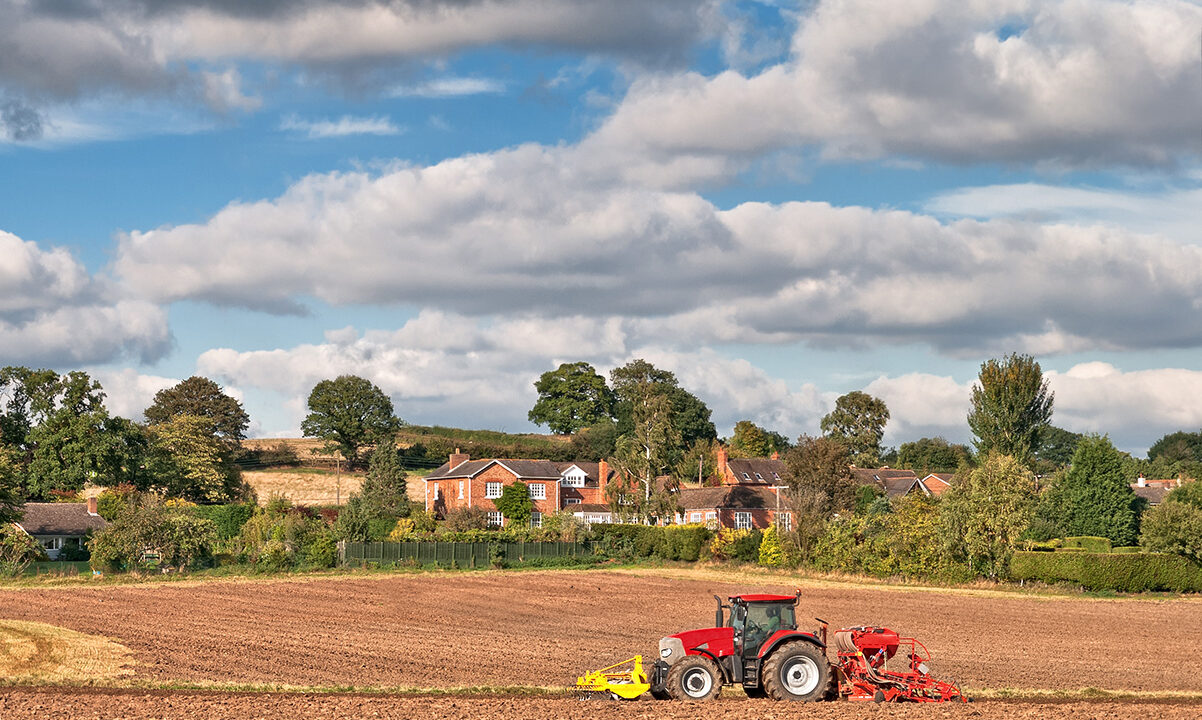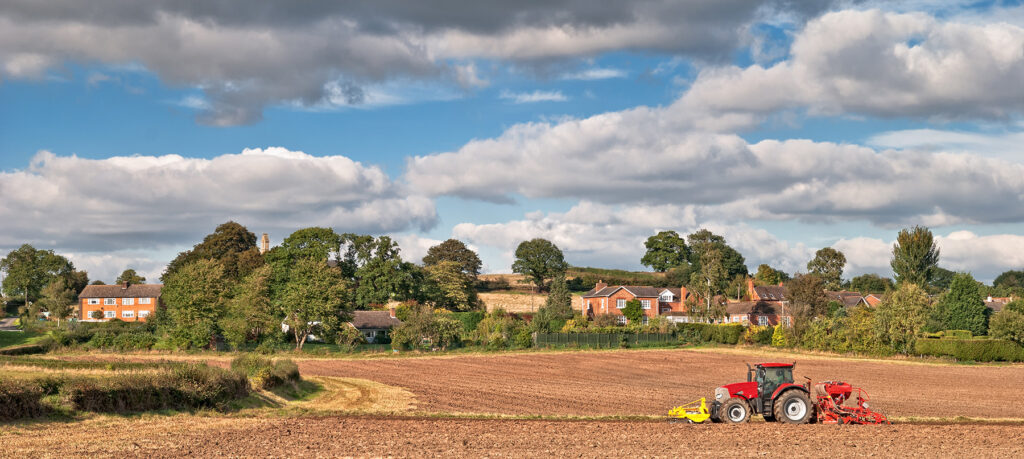
Environmental Land Management Scheme – some long awaited detail!
On 26th January Defra published an update on the rollout of the Environmental Land Management Scheme (ELMS).
Defra states that through the Agricultural Transition they are expanding their schemes to “pay farmers to provide environmental goods and services alongside food production” whilst also providing “one-off grants to support farm productivity, innovation, research and development.” The rhetoric is largely the same but there is certainly more emphasis on food production along side the delivery of public goods, which can only be a good thing.

The recent update by Defra summarises that farmers and land managers will be paid, alongside food production, to deliver outcomes for the climate and environment, to include:
- Creating and restoring a broad range of wildlife habitats
- Improving water quality
- Increasing resilience to flooding and drought
- Creating new woodland
- Managing existing woodlands to increase resilience to pests and diseases
- Reducing carbon emissions, storing carbon and increasing resilience to climate change
There is a lot of detail contained in the Policy Paper, a copy of which can be found here >
This Paper is to be supported by a further publication, named the Environmental Improvement Plan, due “shortly”. There will also be a further Policy Paper published in the spring, named the Green Finance Strategy, which will deal with how Defra’s schemes will be designed to support private sector funding for ‘green goods’.
The following is the briefest of summaries but please contact a member of the Rural Professional team to discuss your individual circumstances if you would like to know more, or if you would like help with an application under any of the schemes or grants. You can continue reading here or download the pdf below.
To confirm, ELMS will now comprise:
- Sustainable Farming Incentive (SFI)
- Countryside Stewardship (CS) and Countryside Stewardship Plus (CS+) – note that Local Nature Recovery (LNR) has been scrapped
- Landscape Recovery
Sustainable Farming Incentive (SFI)
Defra notes that SFI will provide “Payments to farmers for carrying out farming activities in a more environmentally sustainable way to continue food production alongside the delivery of environmental goods and services.”
Agreements will be for 3 years. Importantly Tenant farmers will now be able to withdraw from the scheme without penalty, if they unexpectedly lose management control of the land.
In the future there will be incentives to carry out actions in combinations and at scale.
Standards available now:
- Arable and horticultural soil standard
Introductory level pays £22 per hectare – summary of actions:
- complete soil assessment and produce soil management plan
- test soil organic matter
- add organic matter to all land in the standard once every 3 inc FYM, green manures, chopped straw
- green cover on at least 70% of land in this level of the standard over winter inc autumn sown crops, stubbles, green covers
Intermediate level pays £40 per hectare – summary of actions in addition to Introductory Level actions:
- green cover on at least 50% of land in this level of the standard over winter and multi-species cover crops on an additional 20% of the land
Improved grassland soil standard (can include permanent pasture)
Introductory level pays £28 per hectare – summary of actions:
- complete soil assessment and produce soil management plan
- test soil organic matter
- no more than 5% of the total area of land entered into the standard left bare over winter
Intermediate level pays £58 per hectare – summary of actions in addition to Introductory Level actions:
- establish and maintain herbal leys on at least 15% of land in this level of the standard
In addition, there will be the newly introduced SFI Management Payment. A payment of £20 per hectare, each year, for the first 50 hectares entered into SFI standards.
Six standards to be introduced in 2023:
- Hedgerows standard
- Integrated pest management standard
- Nutrient management standard
- Arable and horticultural standard
- Improved grassland standard
- Low input grassland standard
Summary of standards and payment rates:
| SFI 2023 Standard | Action | Payment Rate | New Action or Variation on CS Option |
| Hedgerows | Assess and record hedgerow condition | £3 per 100 metres – one side | New |
| Manage hedgerows so there’s a range of different heights and widths | £10 per 100 metres – one side | BE3 variation | |
| Maintain existing hedgerow trees, or establish new ones, so there’s an average of at least 1 hedgerow tree per 100m | £10 per 100 metres – both sides | New | |
| Integrated pest management | Complete an integrated pest management (IPM) assessment and produce an IPM plan | £989 per year | New |
| Establish and maintain flower-rich grass margins, blocks, or in-field strips | £673 per hectare | AB8 variation | |
| Establish a companion crop | £55 per hectare | New | |
| No use of insecticide | £45 per hectare | New | |
| Nutrient management | Complete a nutrient management (NM) assessment and | £589 per year | New |
| Establish and maintain legumes | £102 per hectare | GS4 variation | |
| Establish and maintain legume fallow | £593 per hectare | AB15 variation | |
| Arable and horticultural land | Establish and maintain blocks or strips of pollen and nectar flower mix | £614 per hectare | AB1 variation |
| Establish and maintain blocks or strips of winter bird food | £732 per hectare | AB9 variation | |
| Establish and maintain grassy field corners and blocks | £590 per hectare | New | |
| Establish and maintain a 4m-12m buffer strip on arable and horticultural land | £451 per hectare | SW1 variation | |
| Improved Grassland | Take grassland field corners and blocks out of management | £333 per hectare | GS1 variation |
| Maintain improved grassland to provide winter bird food | £474 per hectare | GS3 variation | |
| Establish and maintain a 4m-12m buffer strip on grassland | £235 per hectare | SW2 variation | |
| Manage grassland with very low nutrient inputs (outside SDAs) | £151 per hectare (indicative) | GS2 variation |
Countryside Stewardship (CS) and Countryside Stewardship Plus (CS+)
Defra notes that CS will “pay for a wider range of targeted, specific actions at the right level of ambition to contribute to [Defra’s] environment and climate goals” and CS+ will be more targeted funding “towards actions in places where they can have the biggest impacts, in ways that are joined up across larger areas, designed to deliver outstanding results”.
As already announced, in 2023 payment rates for both management options and capital items have been increased. Here are some examples:
CAPITAL RATES
| RPA code | Capital Item | Old payment rate | New payment rate |
| BN11 | Hedgerow planting – new hedges | £11.60/m | £22.97/m |
| FG2 | Sheep netting | £4.90/m | £7.47/m |
| FG12 | Wooden field gate | £390.00/gate | £489.90/gate |
| LV1 | Cattle grid | £835.00/item | £2,878.80/item |
| TE1 | Plant hedgerow tree | £8.80/tree | £19.06/tree |
MANAGEMENT OPTIONS
| RPA code | Capital Item | Old payment rate | New payment rate |
| AB1 | Nectar flower mix | £579/ha | £614/ha |
| AB8 | Flower rich margins and plots | £628/ha | £673/ha |
| SW1 | 4-6m buffer strip on cultivated land | £419/ha | £451/ha |
| GS4 | Legume and herb rich swards | £358/ha | £382/ha |
| GS2 | Permanent grassland with very low inputs | £132/ha | £151/ha |
| BE3 | Management of hedgerows | £9/m | £10/m |
The best way to consider and evaluate the options/capital items and their payment rates and obligations/restrictions is by using the CSS Grant Finder Tool >
CS will continue to evolve through 2023 and 2024.
The Higher Tier and Mid Tier and Wildlife Offer windows will open again in February and March respectively for applications.
Landscape Recovery
Defra notes that Landscape Recovery is designed to “fund a smaller number of longer-term, larger-scale, bespoke projects to enhance the natural environment and deliver significant benefits.”
The scheme will re open for in spring this year. Defra confirms that round 2 will focus on “net zero, protected sites and habitat creation” which could include “landscape scale projects creating and enhancing woodland, peatland, nature reserves and protected sites such as ancient woodlands, wetlands and salt marshes”.
If you have like minded neighbours and wish to make landscape scale change, then applying for a bespoke agreement under this scheme should be considered.
The following matters outlined in the Policy Paper are relevant to a number of our existing clients and therefore worth specific mention in this briefing note.
Tenants
As noted earlier, the entry requirements of SFI have been altered to allow Tenant’s with a year to year periodic tenancy to enter their tenanted land into the scheme on a three year agreement, without having to obtain the Landlord’s consent. A Tenant will be required to confirm during the application process that they ‘expect’ to have management control for the duration of the agreement. If the tenancy is brought to an end unexpectedly, the Tenant will not be penalised.
For CS or CS+, the situation is less favourable. A Tenant will still require the Landlord to be a counter-signatory to the agreement, the Landlord signing up to delivering the agreement objectives if the tenancy comes to an end. Defra states that as CS evolves, they are considering what more can be done to make the CS scheme more accessible to Tenants.
Grants
Our Rural Grants update published on our website on 6th January provides a summary of Defra’s grant schemes (https://www.lambertandfoster.co.uk/rural-grants-update/). In this latest announcement by Defra, they simply confirm that in 2023 they will be running further rounds of productivity, innovation, research and development grants.
Annual health and welfare review
The annual health and welfare review is designed to:
- help reduce endemic diseases
- improve health and welfare of livestock
- increase productivity
- improve biosecurity measures
- improve the use of medicines, including antibiotics and vaccinations
Defra will pay for a farm visit from a vet to complete an annual review. The review will include the vet testing the livestock for the relevant endemic disease or condition and advising on actions to improve their health and welfare.
The payment rates for 2023 will be:
- £684 for a pig review
- £436 for a sheep review
- £522 for a beef cattle review
- £372 for a dairy cattle review
Permanent Crops
For those clients with permanent crops, the situation remains that payments under SFI or CS/CS+ are only available where land is cultivated and taken out of production. There is the promise of payments in the future relating to the following:
- Use of precision farming techniques
- Advisers funded by Defra to advise on adopting integrated pest management and improving nutrient efficiency
- Reducing insecticide use
Our Rural Professional Team is on hand to discuss the implications of this announcement on your farming business.










